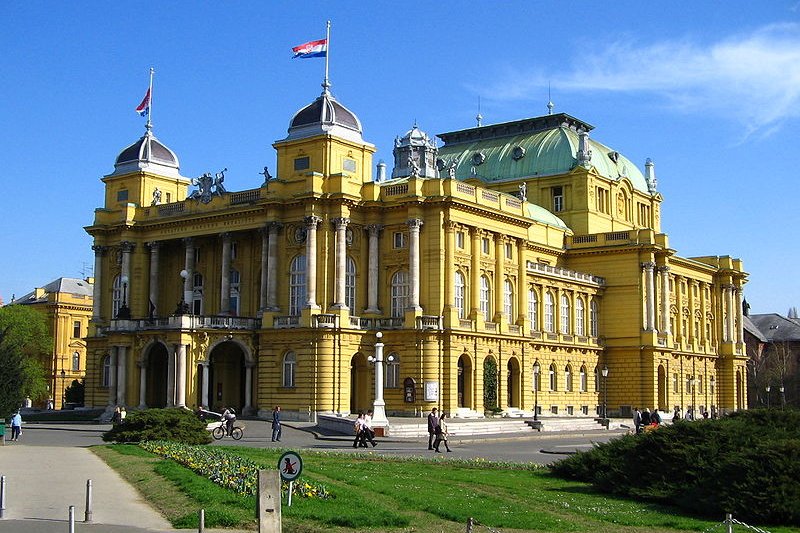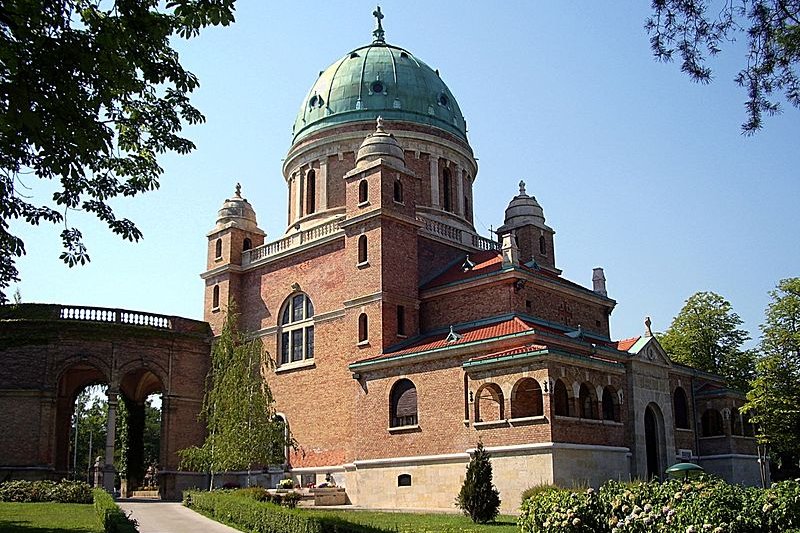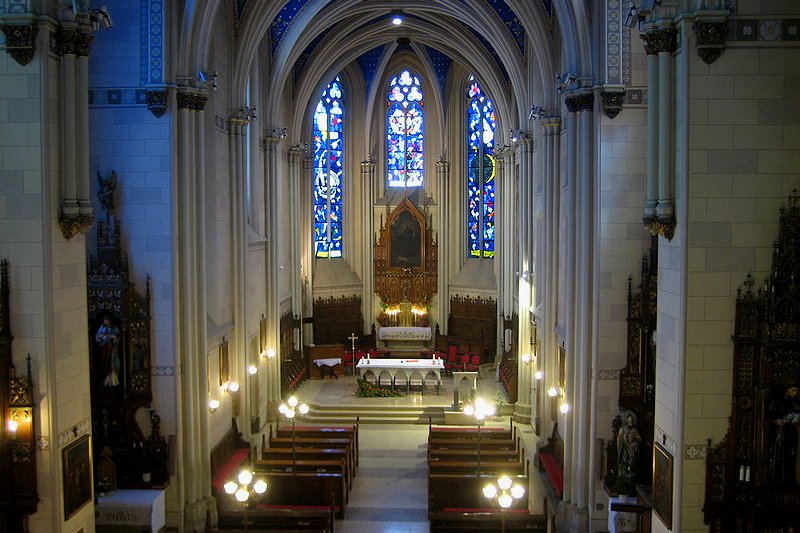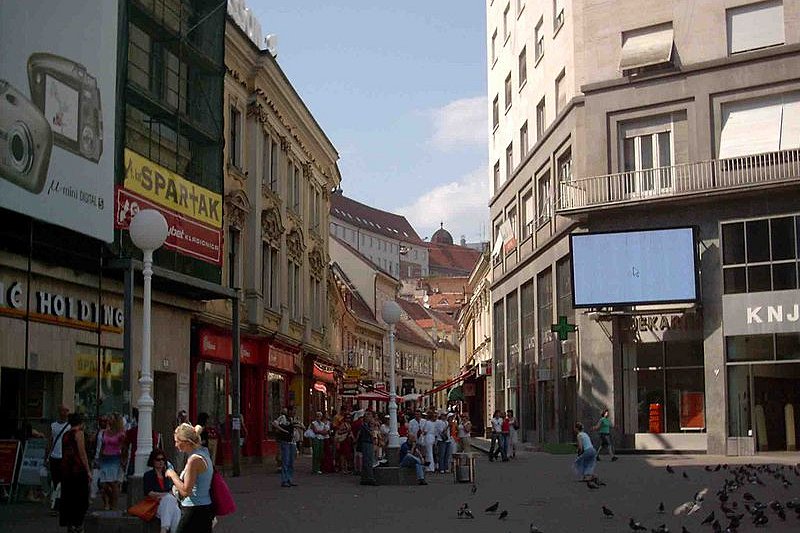 Croatian National Theater, Zagreb
Croatian National Theater, ZagrebSource: https://commons.wikimedia.org/wiki/File:Zageb_Croatian_National_Theater.jpg
Author: Lokksi

Zagreb is the capital and biggest city in Croatia. It is located along the Sava river, around the central part of the country. To the north are the Medvednica mountains.
Zagreb covers 171 sq km (66 sq mi) and has a population of 708,000 (2011 estimate). The city is at an elevation from 122 m (400 ft) to 1,035 m (3,396 ft). It observes the Central European Time, which is an hour ahead of Coordinated Universal Time (UTC+1), and two hours ahead during Daylight Saving Time in summer.
Zagreb experiences an oceanic climate. Its warmest months are July and August, when average high temperatures reach 26.7°C (80.1°F). Coldest month is January, with average low temperature of -4°C (24.8°F). June is the wettest month, with 99.3 mm (3.9 in) of precipitations. There may be snow from December to March.
Zagreb is the political, economic and financial center of Croatia. Most of the banks in the country have their headquarters in the city. The city has the highest gross domestic product per capita in Croatia.
 Church of Christ the King, Zagreb
Church of Christ the King, ZagrebSource: https://commons.wikimedia.org/wiki/File:Crkva_Krista_Kralja_Mirogoj_srpanj_2007.jpg
Author: SpeedyGonsales

The history of Zagreb goes back to Roman times, when a town called Andautonia existed there in the 1st century AD. The first time the name Zagreb was found was in 1094, when the settlement of Kaptol was developed alongside another settlement, Gradec. Kaptol, which was inhabited mostly by the priests, and Gradec, mostly by merchants, together form Zagreb, but was only officially merged in 1851.
Zagreb became the seat of Croatian viceroys in 1621. The government of Croatia also moved to Zagreb from Varaž in 1776. In the 19th century the city received its first railway line and had a horse-drawn tramcar system. The city continued to grow in the early 20th century, particularly in the 1920's. Zagreb was selected to be the capital of Croatia when it secede from Yugoslavia in 1991. It experienced some fighting during the Croatian War of Independence in 1991-95. Today peace has returned to Zagreb and the city is developing rapidly.
 Franciscan Church of St Francis, Zagreb
Franciscan Church of St Francis, ZagrebSource: https://commons.wikimedia.org/wiki/File:Franjevci_Kaptol1.JPG
Author: Donatus

Visiting Zagreb, Croatia
Major highways connecting Zagreb to the rest of Europe include the E65, which connects it with Rijeka to the southwest; the E71, connecting it to Zadar in the south and Budapest in the northeast; and E70 connecting it with Ljubljana to the west and Belgrade to the southeast.Zagreb International Airport (ZAG) receives flights from major cities in Europe. It is the base of the national carrier Croatian Airlines. Arriving here, you can take a bus from the airport bus station to the bus terminal in downtown Zagreb. The fare is 30 kuna.
 Radičeva Street, a shopping street in Zagreb
Radičeva Street, a shopping street in ZagrebSource: https://commons.wikimedia.org/wiki/File:Radi%C4%87eva_street,_Zagreb,_Croatia.jpg
Author: Perun

Exploring Zagreb
The public transportation network of Zagreb comprises trams, buses and trains. A single-journey ticket, valid for 1.5 hours, is 8 kunas when bought from newspaper stands, and 10 kunas if bought directly from the driver. 24-hour travel passes are available for 25 kunas.Places of Interest in Zagreb, Croatia
Churches and Cathedrals- Cathedral of St Stephen
- Church of St Catherine
- Church of SS Cyril and Methodius
- Church of St Francis
- Church of St Mark
- Church of St Mary
- Archaeological Museum
- City Museum
- Croatian Historical Museum
- Ethnographic Museum
- Gallery of Modern Art
- Gallery of Old Masters
- Meštrović Gallery
- Mimara Museum
- Museum of Arts and Crafts
- National Museum of Naive Art
- Natural History Museum
- Archbishop's Palace
- Art Pavilion
- Ban's Palace
- Croatian National Theater
- Parliament Building of Croatia
- Stone Gate
- Tower of Lotrščak
- Botanical Gardens
- Maksimir Park
- Mirogoj Cemetery
 Latest updates on Penang Travel Tips
Latest updates on Penang Travel Tips

Copyright © 2003-2025 Timothy Tye. All Rights Reserved.

 Go Back
Go Back